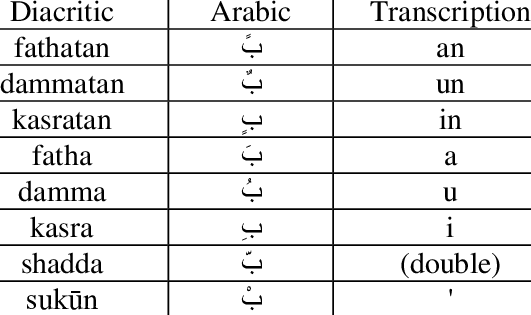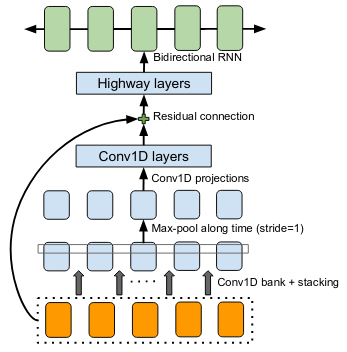
Introduction
General
Diacritization is the art of completing Arabic scripts with the correct vocalization, which is a task that only advanced Arabic speakers successfully manage.
This blog explains how we have learned to do it with an advanced research architectures before porting it into production in Ruby and Javascript.
The Rababa library (with Python and Ruby versions) is the result of this work and a well-documented, open source library that everyone could use.
Arabic within the landscape of languages
Arabic is used in a broad geographical area ranging from North Africa to Afghanistan and Pakistan, and is intrinsically connected with the Islamic civilization.
Within the main language classes, Arabic finds itself within the so-called Abjad writing system:
-
Alphabetical (English, Spanish, French, Roman, …)
-
Abjad (Arabic, Hebrew, Aramaic, …)
-
Logographic and syllabic (Chinese, Japanese, …)
-
Abugida (Hindi, Thai, Khmer, Bhurmese, …)
Characteristics of the Abjad group is in which each symbol or glyph stands for a consonant, in effect leaving it to readers to infer or otherwise supply an appropriate vowel.
Role of diacritization
As a result, in Arabic, a set of consonants can be pronounced in several ways as well as have multiple meanings. This ensure a great plasticity of the language and so native speakers are used to writing this way, and to allow inference of meanings and pronunciations from the context.
Inversely, in Arabic, unlike many other languages, the vocalization can be exactly specified via diacritics: symbols added over or under the consonants as in colour, in the image below.

Writing Arabic with diacritics, called “pointed Arabic”, is useful for language learners.
As the diacritics provide direct instructions on pronunciation, pointed Arabic is also important in various use cases, for instance, in sacred literature and for praying. As a natural consequence, the Qur’an constitutes the purest reference for diacritization.
Applications in informatics
Pointed Arabic is obviously useful and essential for applications to NLP usage in text-to-speech and obviously transliteration.
Arabic diacritics: “Al Tashkīl” تَشْكِيل
Basic diacritics
Here’s a list with examples of basic Arabic diacritics:

Furthermore, some Arabic diacritics can be combined as shown below:
-
Shaddah+Fatha
-
Shaddah+Kasra
-
Shaddah+Kasratan
-
Shaddah+Dammatan
-
Shaddah+Fathatah.
Practical examples
The following example demonstrates the concept of collisions, which highlights the importance of context in transliteration for collision disambiguation.
Diacritization in Interscript
General
Interscript provides with mappings allowing to transliterate many languages into various writing systems.
In this context, Abjad languages need to be processed via several steps:
-
Arabic text ⇒ diacritization ⇒ transliteration
Diacritization with Deep Learning
Correct diacritization requires an accurate understanding not only of the language morphemes and their variants but also the language grammar.
Furthermore, given the possible multiple meanings available to a particular word in Arabic (or collision), some understanding of the context is required!
Approaches
This hard problem has been approached in various ways with an evolution quite typical:
-
Rule-based approaches
-
Machine Learning approaches
-
Deep Learning approaches
For more details, we have reviewed the latest publications, tested the latest code bases and summarised the latest research ideas here.
Production requirements
In our technology choice, we obviously want to use the best research library or architecture.
However, we need to be able to:
-
run the inference step quickly on standard CPUs (i.e. without GPUs);
-
run the inference step from Javascript, which is achieved here with the following workflow:
-
Implementation and training of neural networks with PyTorch;
-
Convert PyTorch model –> ONNX model;
-
Load ONNX model from Ruby;
-
Convert Ruby –> Javascript (as documented in our post about Opal)
-
-
maintain the size of the model under 200MB; and
-
publish a public, usable and documented code library.
Training and results
Architecture
General
After careful review and testing of the latest academic literature, we have decided to start with the public code linked to this recent publication:
-
Effective Deep Learning Models for Automatic Diacritization of Arabic Text (01.2021) (abbreviated as ADAT here).
Encoder – Decoder + CBHG + LSTM
The current library is built on a slightly simplified version of the tacotron (04.2017) initially developed for text-to-speech.
The choice of the variation with CBHG is motivated by its better results compared to other models tested and also its ability to produce fast predictions, which is important in production.
Encoder - Decoder
This has been applied to various problems, like neural machine translation, image captioning, and text-to-speech synthesis.
Obviously, the sequences under consideration are:
Arabic symbol sequence ⇒ diacritics sequence
Below, we illustrate the full architecture. LSTM was used instead of Attention for the RNN’s.

Even though the authors discuss attention on an encoder/decoder model, they have not implemented it as above, so this could be a straightforward architecture to build and test for us in the future.
CBHG
CBHG stands for:
-
1-D Convolution Bank,
-
Highway network,
-
Bidirectional GRU.
The architecture is the core of the NNets and a modified version of feed-forward networks with a gating mechanism that allows for information flow and computation across multiple layers without attenuation.

Preprocessing
Preprocessing in the deep learning library consists of:
-
Filtering out non-Arabic characters
-
Mappings the remaining characters to integers
-
Embeddings
Datasets
-
Classical Arabic Corpus (CA Corpus):
-
The corpus is divided into training (94%, 2,333,825 sentences), test (5%,124,139 sentences), and validation (1%, 24,827 sentences) sets.
-
-
Modern Standard Arabic Corpus (MSA Corpus):
-
MSA Corpus is simply: CA + MSA Corpuses
-
System Evaluation and Performance
The metrics used are standard for the problem of Arabic diacritization:
-
Diacritization Error Rate DER: percentage of characters that were not correctly diacritized
-
Word Error Rate WER: percentage of words that were not correctly diacritized
-
with or without Case-Ending CE: exclude or not search word’s last character from error calculation since they mostly depend on grammatical rules.
Scores after Training
| WER | DER | WER* | DER* | |
|---|---|---|---|---|
Our results |
5.10 |
1.24 |
2.82 |
0.87 |
ADAT |
4.47 |
1.14 |
2.42 |
0.85 |
(ADAT stands for results quoted in Effective Deep Learning Models for Automatic Diacritization of Arabic Text (01.2021))
Even though we could not reproduce exactly the results advertised in the article, our scores are comparably very good and within the range of the best results up till 2021-08.
Towards production
In Python
Even though the original research library was written in Python, we had to build new features and components, among other adding the ability to diacritize simple strings or text files.
-
After training, the resulting PyTorch model is released and can be run.
As ONNX models
We converted our PyTorch model to ONNX models.
This is done via a Python script and we have found:
-
useful to keep the sequence length flexible as a parameter of the model. Reducing that length allows to reduce the memory required as well enhance the NNets computation speed. It makes it possible to perform diacritization on resource-limited architectures.
-
that passing sparse parameters would lead to some imprecisions, but that a vector like
[1,1,1,1,…]allowed to replicate results almost perfectly with ONNX. -
that the batch size is fixed and derived from the initial PyTorch model.
Ruby
-
The text pre- and post-processing steps have to be rewritten.
-
We used the Ruby onnxruntime to load and integrate the ONNX model.
-
The work is accessible via a Ruby gem.
Further improvements
Handling realistic data, with multiple scripts/symbols
In the original research paper, the trained NNets are specialised in dealing only with Arabic.
When facing real data, we needed to find a way to reconcile diacritized Arabic text with the hybrid, original text. We call this process “reconciliation”.
-
original string:
# گيله پسمير الجديد 34 -
diacritised string (with non Arabic removed by the NNets preprocessing):
يَلِهُ سُمِيْرٌ الجَدِيدُ -
reconcile strings: algorithm ⇒
# گيَلِهُ پسُمِيْرٌ الجَدِيدُ 34
The reconciliation algorithm is implemented in Rababa.
Scoring and benchmarking processes
-
Even though diacritization can be scored independently on the designated test dataset, we have added additional practical datasets.
-
As mentioned, in Interscript, the diacritization stage must take place before transliteration. We have introduced various distance metrics to assess the full transliteration process quality on various datasets.
Collision disambiguation
As mentioned above, an Arabic phrase can be applied various diacritics which lead to different meanings. This problem is left to the Deep Learning model to solve.
We understand, however, that a practical implementation might require special treatment of collisions, and have experimented but we leave to future works the following ideas to improve collision disambiguation:
-
parts-of-speech tagging
-
search within a “personal names” and “geonames” database
Summary
Starting from a review of the scientific literature, we could rapidly implement the Rababa library in Ruby and Python, a brand new library porting cutting-edge research algorithms into production — and soon for JavaScript.
Solving such a complex problem and porting it to a completely different production environment was only possible thanks to the power of deep learning and an intensive team effort.
This work was made possible by existing libraries, including onnxruntime, opal webassembly, opal onigmo and of course almodhfer’s Arabic Diacritization software.